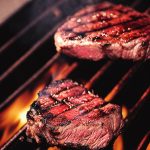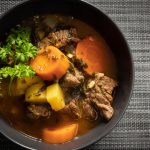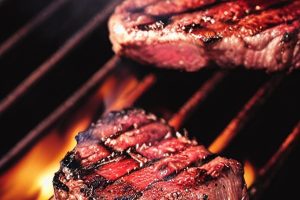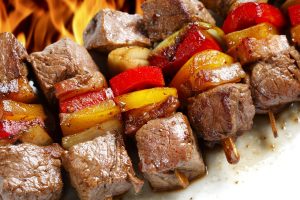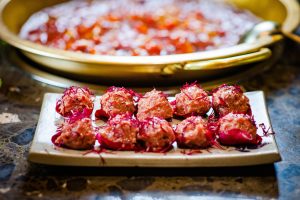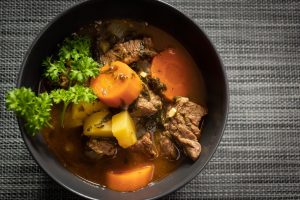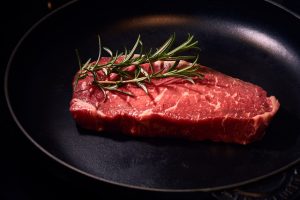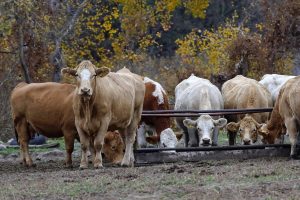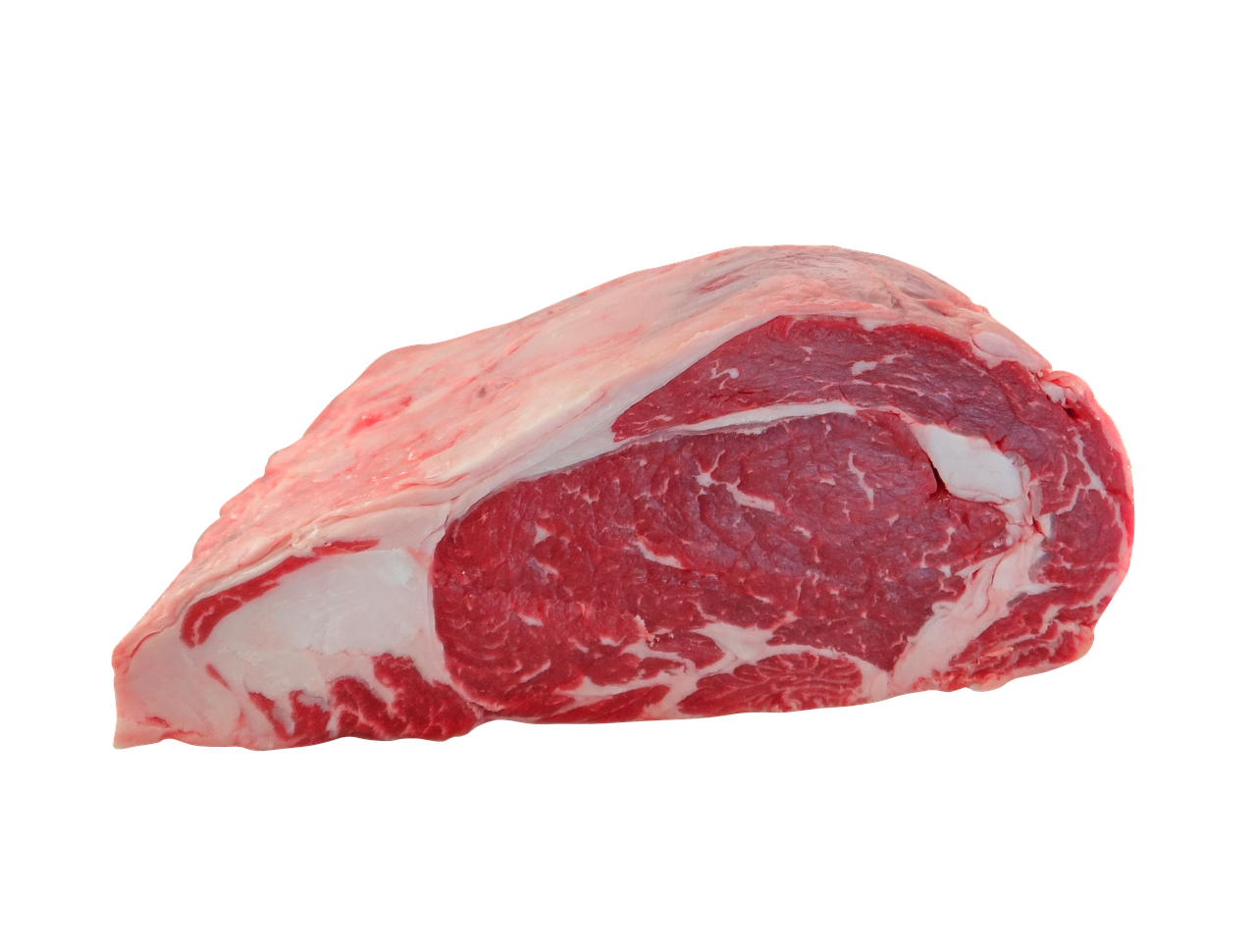
Unveiling the Ancient Origins of Moo Shu Beef: A Culinary Journey
Moo Shu Beef, a popular and delicious dish found in Chinese cuisine, has a rich history that dates back to ancient times. This culinary journey takes us on a voyage to unveil the ancient origins of Moo Shu Beef, providing insights into its ingredients, preparation methods, and cultural significance. Through this exploration, we will discover the fascinating story behind this beloved dish.
Moo Shu Beef is believed to have originated in Northern China during the Han Dynasty, which existed from 206 BC to 220 AD. This region was known for its abundance of beef, and as a result, it became a staple ingredient in many local dishes. The Han Dynasty was a prosperous era that emphasized culinary arts, and it was during this time that the foundations of Moo Shu Beef were laid.
One of the key components of Moo Shu Beef is the use of thinly sliced beef, which was a technique developed during the Han Dynasty. The beef was marinated in a mixture of soy sauce, rice wine, and other seasonings, allowing the meat to absorb the flavors and become tender. This method of marinating and slicing beef was revolutionary at the time and became a defining characteristic of Moo Shu Beef.
Another essential ingredient in Moo Shu Beef is the use of Chinese pancakes. These pancakes are made from a combination of flour, water, and salt, which are mixed together to form a dough. The dough is then rolled into thin circles and cooked on a hot griddle until they become golden brown. The result is a light and fluffy pancake that serves as the perfect vessel for the flavorful beef.
In addition to the beef and pancakes, Moo Shu Beef traditionally includes a variety of vegetables such as cabbage, mushrooms, and bamboo shoots. These ingredients not only add texture and color to the dish but also provide a balanced and nutritious meal. The vegetables are typically stir-fried in a wok, along with the marinated beef, creating a harmonious blend of flavors and textures.
Moo Shu Beef was not only appreciated for its taste but also for its cultural significance. In ancient China, the preparation and consumption of food were seen as a way to express respect and gratitude towards one’s ancestors. Moo Shu Beef was often served during special occasions and family gatherings, symbolizing unity and prosperity. The dish became a symbol of good fortune and was believed to bring luck and happiness to those who ate it.
Today, Moo Shu Beef continues to be a beloved dish that is enjoyed by people all around the world. Its ancient origins and cultural significance have been preserved, making it not just a culinary delight but also a testament to the rich heritage of Chinese cuisine.
In conclusion, the ancient origins of Moo Shu Beef can be traced back to the Han Dynasty in Northern China. Its unique preparation methods, flavorful ingredients, and cultural significance have made it a timeless dish that continues to captivate food enthusiasts to this day. Whether enjoyed in a traditional Chinese restaurant or prepared at home, Moo Shu Beef allows us to savor the flavors of history and appreciate the culinary craftsmanship of our ancestors.
From Ancient China to Modern Palates: Tracing the History of Moo Shu Beef
Moo Shu Beef is a beloved Chinese dish that has captivated taste buds around the world. With its delectable combination of tender beef, crisp vegetables, and savory sauce, it has become a staple in Chinese cuisine. However, the origins of this dish can be traced back to ancient China, where it was enjoyed in a slightly different form. In this article, we will explore the history of Moo Shu Beef, from its humble beginnings to its modern adaptations.
The roots of Moo Shu Beef can be found in the northern part of China, where it was traditionally prepared as a stir-fried dish using thinly sliced beef. This cooking method allowed the beef to retain its tenderness while infusing it with the flavors of the other ingredients. The dish was typically made using seasonal vegetables such as cabbage, mushrooms, and bean sprouts, which added a delightful crunch and freshness to the dish.
During the Tang Dynasty (618-907 AD), the dish underwent a significant transformation. It was during this time that pancakes made from wheat flour were introduced to China. These thin, round pancakes were used as a wrapper for various fillings, including Moo Shu Beef. This addition added a unique texture and taste to the dish, making it even more enjoyable.
As the centuries passed, Moo Shu Beef continued to evolve. During the Ming Dynasty (1368-1644 AD), the dish gained popularity among the wealthy population. It became a signature dish in imperial banquets and was often enjoyed by emperors and nobles. The ingredients used in the dish became more refined, with the addition of ingredients such as bamboo shoots, wood ear mushrooms, and lily buds.
The modern adaptation of Moo Shu Beef that we are familiar with today can be attributed to the influence of Chinese immigrants in the United States. In the late 19th century, Chinese immigrants began arriving in America, bringing with them their culinary traditions. However, due to the unavailability of certain ingredients, they had to make adjustments to their recipes. This led to the introduction of new ingredients such as carrots, bell peppers, and onions, which were readily available in America. These additions gave Moo Shu Beef a vibrant and colorful appearance, as well as a slightly sweeter taste.
Today, Moo Shu Beef is enjoyed by people all over the world. It has become a popular dish in Chinese restaurants, where it is often served with steamed rice or pancakes. The dish has also been adapted to suit various dietary preferences, with vegetarian and chicken versions now available.
In conclusion, Moo Shu Beef has a rich and fascinating history that spans centuries. From its humble origins in ancient China to its modern adaptations, this dish has stood the test of time. Whether you prefer the traditional version or a more contemporary twist, Moo Shu Beef continues to delight palates around the world.
A Taste of Tradition: The Age-Old Roots of Moo Shu Beef
Moo Shu Beef is a classic Chinese dish that has been enjoyed for centuries. With its flavorful combination of tender beef, crisp vegetables, and fragrant seasonings, this dish offers a taste of tradition that has stood the test of time.
The origins of Moo Shu Beef can be traced back to the northern regions of China, where it was developed during the Han Dynasty (206 BC – 220 AD). This dish was traditionally made with pork, but beef became a popular alternative during the Qing Dynasty (1644-1912).
The preparation of Moo Shu Beef involves a meticulous process that showcases the skill and precision of Chinese cuisine. Thinly sliced beef is marinated in a mixture of soy sauce, rice wine, and various spices, allowing the flavors to infuse and tenderize the meat. The beef is then stir-fried with a medley of vegetables, including cabbage, mushrooms, and bamboo shoots, creating a delightful balance of textures and colors.
What sets Moo Shu Beef apart from other Chinese dishes is its unique wrapping technique. The stir-fried beef and vegetables are traditionally served with Mandarin pancakes, which are thin, delicate pancakes made from flour and water. To enjoy this dish, diners place a small amount of the beef and vegetable mixture onto a pancake, roll it up tightly, and savor the burst of flavors with each bite.
In addition to its delectable taste, Moo Shu Beef also holds cultural significance in Chinese cuisine. The name “Moo Shu” is derived from the Mandarin word for “wood shavings,” which refers to the thin strips of meat used in the dish. This name reflects the importance of texture and presentation in Chinese culinary traditions.
Over the years, Moo Shu Beef has gained popularity beyond China’s borders, becoming a staple in Chinese-American restaurants and households worldwide. Its versatility allows for variations in ingredients, such as the use of different meats or even vegetarian options. However, the essence of this dish remains rooted in its age-old recipe and cooking techniques.
In conclusion, Moo Shu Beef offers a taste of tradition that has been cherished for centuries. Its ancient origins, meticulous preparation, and unique wrapping technique all contribute to its status as a beloved classic in Chinese cuisine. Whether enjoyed in a restaurant or homemade with care, this dish continues to bring people together and honor the rich traditions of Chinese culinary heritage.
The Story Behind the Dish: Unraveling the Origins of Moo Shu Beef
Moo Shu Beef is a popular Chinese dish that has gained immense popularity in Western countries. Its unique combination of flavors and textures has made it a favorite among food enthusiasts. But have you ever wondered about the story behind this delicious dish? Where did it come from and how did it make its way into our plates? Let’s unravel the origins of Moo Shu Beef.
The origins of Moo Shu Beef can be traced back to Northern China, specifically the Shandong province. Shandong cuisine is known for its bold flavors and the use of fresh ingredients. Moo Shu Beef is believed to have been created during the Ming Dynasty (1368-1644) and was originally made with pork, which was the most commonly consumed meat in China at that time.
The name “Moo Shu” is derived from the Mandarin word “mù xū,” which means “wood shavings.” This name refers to the way the meat is cut into thin strips, resembling wood shavings. The dish was traditionally prepared by stir-frying thinly sliced pork with various vegetables, such as cabbage, wood ear mushrooms, and scallions, in a flavorful sauce.
The popularity of Moo Shu Beef grew during the Qing Dynasty (1644-1912), when it became a favorite dish among the imperial court. As the dish gained recognition, it started to evolve and adapt to different regional tastes. Over time, beef was introduced as an alternative meat option, catering to those who preferred it over pork.
When Chinese immigrants began arriving in the United States during the mid-19th century, they brought their culinary traditions with them. Moo Shu Beef made its way to the western world and quickly became a staple in Chinese-American cuisine. However, there were some modifications made to suit the American palate. The addition of hoisin sauce, a sweet and savory sauce made from soybeans, added a unique flavor profile to the dish.
Today, Moo Shu Beef is commonly served with Mandarin pancakes, which are thin, unleavened bread-like pancakes. These pancakes are used to wrap the stir-fried beef and vegetables, creating a flavorful and satisfying meal. The dish is often accompanied by additional condiments, such as plum sauce or soy sauce, to enhance the taste even further.
In conclusion, Moo Shu Beef is a dish with a rich history that dates back centuries. It originated in Northern China and was traditionally made with pork. Over time, it gained popularity and was adapted to different tastes, eventually making its way to the United States. Today, it remains a beloved dish that showcases the bold flavors and culinary traditions of Chinese cuisine.
From Imperial Courts to Local Eateries: The Evolution of Moo Shu Beef Throughout History
Moo Shu Beef, a popular Chinese dish enjoyed by people worldwide, has a rich history that spans centuries. From its origins in the imperial courts of ancient China to its transformation into a beloved dish found in local eateries, this culinary delight has undergone an intriguing evolution. This article will explore the fascinating journey of Moo Shu Beef, shedding light on the cultural and historical significance of this delectable dish.
The roots of Moo Shu Beef can be traced back to the imperial courts of China during the Ming Dynasty (1368-1644). It was here that the dish first emerged as a luxurious delicacy enjoyed by the elite. The preparation of Moo Shu Beef required the finest ingredients and meticulous cooking techniques that were only available to the imperial kitchens. The beef was thinly sliced and marinated in a flavorful blend of soy sauce, rice wine, and various spices. It was then stir-fried with vegetables such as cabbage, mushrooms, and bamboo shoots, resulting in a harmonious combination of textures and flavors.
Over time, the popularity of Moo Shu Beef extended beyond the imperial courts and reached the broader population of China. As the dish became more accessible, it underwent modifications to suit different tastes and regional preferences. Local variations emerged, incorporating ingredients like bean sprouts, scallions, and even scrambled eggs. These regional adaptations gave rise to a diverse array of Moo Shu Beef recipes, each with its own distinctive flair.
The evolution of Moo Shu Beef continued as Chinese immigrants brought their culinary traditions to other parts of the world. In the late 19th and early 20th centuries, Chinese immigrants settled in countries such as the United States, where they established their own restaurants and eateries. These establishments introduced Moo Shu Beef to a whole new audience, adapting the dish to suit the local palate.
In this new setting, Moo Shu Beef underwent further transformations. Americanized versions of the dish started to incorporate ingredients like carrots, bell peppers, and even shredded lettuce. Additionally, the traditional Mandarin pancakes that accompanied the dish were sometimes replaced with flour tortillas, providing a fusion of Chinese and Mexican culinary influences.
Today, Moo Shu Beef can be found in countless Chinese restaurants and local eateries across the globe. While it may have evolved from its origins in the imperial courts, the essence of the dish remains intact. Moo Shu Beef continues to captivate diners with its tender beef, vibrant vegetables, and delectable flavors.
In conclusion, the journey of Moo Shu Beef from its humble beginnings in the imperial courts of ancient China to its widespread popularity in local eateries is a testament to its enduring appeal. This dish has transcended time and cultural boundaries, adapting and evolving to suit different tastes and preferences. Whether enjoyed in a luxurious restaurant or a neighborhood eatery, Moo Shu Beef continues to be a beloved dish that showcases the rich culinary heritage of China.
